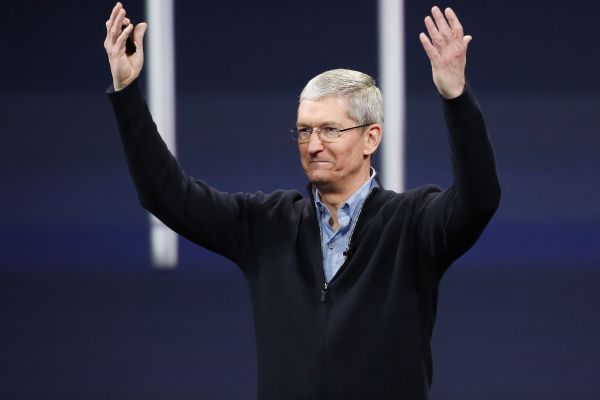As Apple looks to set itself up to Wall Street as the de facto standard of what a smartphone can — and should — look like as consumer demand evolves over time, it was able for the large part to deliver on that claim as it showed up with a big beat in the fourth quarter.
Apple had already set the tone going into this quarter that things were going to be better than what industry observers had expected. And briefly, after the report, Apple’s market cap rose above $900 billion. Ever since it gave that sign to Wall Street, it seemed like Apple is primed to chase a market cap of $1 trillion with a next-generation smartphone to ignite new demand and a portfolio of products that lock people into using that smartphone. It’s had an impressive run up this year, rising nearly 50 percent before this report came out.
That led to a big spike in the stock, as Apple basically signaled that its next-generation iPhones were going to outperform and re-ignite Apple’s growth engine. Having stalled in the past handful of quarters, Wall Street was looking for Apple to figure out a way to spark consumer demand for its iPhones, which it looks like it was able to do with the launch of the iPhone 8 and iPhone X.
The numbers beat what Wall Street was looking for effectively across the board, the specifics of which we’ll get to later. The important thing here, however, is just how much better the company did in turning out in raw performance. Apple’s reported revenue today falls above even the higher end of the company’s forecast for the fourth quarter. Here’s how its revenue stacks up compared to the estimates it set in its earnings report in the last quarter:
This was going to be a big quarter for Apple. The company signaled to Wall Street that it would land better than what was estimated, meaning that it was setting high expectations for its next phones. That report came out before the unveiling of the iPhone X, where first impressions have largely been positive and Apple is trying to make its claim as to what the next generation of the smartphone looks like. If Apple is able to do that, it might convince a new wave of consumers to pour into stores and upgrade to a much higher-priced phone — if it can keep up with demand, that is.
Apple has increasingly had to fight off competition in the higher-end smartphone bracket, which has traditionally been its sweet spot. It has to contend with Samsung, Google’s Pixel and new entrants like the Essential Phone, which may now look to undercut the phone with a price drop. The iPhone X, indeed, is not a play downstream — instead, it is a play going even further upstream and providing a more premium product. Whether that will play out with consumers was still a big question, but already shipment dates for the iPhone X are estimated to be between 5 to 6 weeks.
Now Apple is headed into the holiday quarter, where demand for the iPhone X may be even higher alongside the updated iPhone 8. Apple is signaling a big one there, too, and one that should handily beat what it reported for the first quarter of 2017 and potentially show that it’s stepping into a new era of growth it hasn’t seen since it bumped up the size of its phones with the iPhone 6 and iPhone 6 plus.
Today’s report pushed that even higher with another 3 percent jump, and sets the tone as to whether Wall Street thinks Apple will be able to pass that (largely symbolic) mark. A jump of 3 percent at face value may not seem high, but for a company like Apple, that’s tens of billions of dollars to its market cap as it marches toward $1 trillion:
Here’s the final slash line for the company:
- Q4 revenue: $52.6 billion, versus $50.7 billion from Wall Street estimates (up 12 percent y/y)
- Q4 earnings: $2.07 per share, versus $1.87 per share from Wall Street estimates
- iPhones sold: 46.7 million, versus 46.1 million from Wall Street estimates (up 3 percent y/y)
- iPads sold: 10.3 million (up 11 percent y/y)
- Macs sold: 5.4 million (up 10 percent y/y)
- Services revenue: $8.5 billion
- Q1 2018 revenue forecast: $84 billion to $87 billion
